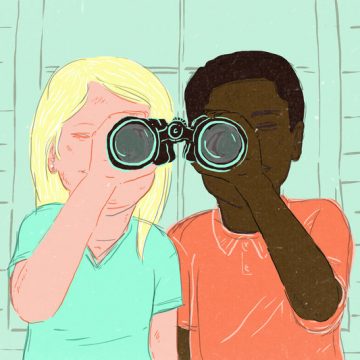It’s all over the news. You see the news article headlines. You may even notice it happening in your own school district.
A major shortage of teachers.
But, why are we facing this problem in the United States, and what can be done about it?
In this guide, we discuss the lack of teachers, potential causes, and how to fix the teacher shortage by providing more support to teachers through individualized coaching and professional learning.
Contents
- What Does the Current Teacher Shortage Look Like?
- Why Is There a Teacher Shortage in the U.S.?
- Which States Are Affected the Most By the Shortage of Teachers?
- Solving the Teacher Shortage Through Ongoing Training and Support
- TORSH Talent: Providing Teacher Shortage Solutions Through Observation and Coaching
What Does the Current Teacher Shortage Look Like?
The current teacher shortage in the U.S. has been a long time coming. The number of people completing traditional teacher education programs declined by 35% between the 2008–09 and the 2018–19 academic years.
The COVID-19 pandemic only amplified existing problems in educating and retaining teachers. In fact, more than 135,000 public school teachers are projected to leave the profession by 2026, according to new government data.
Why Is There a Teacher Shortage in the U.S.?
A study conducted by the National Education Association (NEA) cited burnout as the number one reason for teacher shortages. With 74% of teachers claiming they have to take on extra duties to cover staff shortages and 80% reporting that unfilled job openings have led to an increased workload, it’s no wonder.
Which States Are Affected the Most By the Shortage of Teachers?
While the issue remains a nationwide crisis, California is listed as the number one state suffering from a shortage of teachers.
Recent research from the California Department of Education shows that California has been hit glaringly hard by these circumstances. Almost one in five classes in the state is being taught by underqualified teachers.
“With this data, we can focus on measures to assist our educator workforce as they strive to provide high-quality teaching to all students, especially our most vulnerable students,” says California State Board of Education President Linda Darling-Hammond.
Solving the Teacher Shortage Through Ongoing Training and Support
Helping teachers feel supported, and improving their practice, during the current education crisis is a priority to education leaders across the U.S. Professional learning that includes personalized coaching is a proven way to increase teacher job satisfaction and instructional practice.
A recent national study from the Institute of Education Sciences revealed that video-based coaching, in particular, can drastically improve classroom performance.
The study, released in June 2022, found that five cycles of video-based coaching with teachers led to a notable increase in student test scores.
The teachers who utilized video-based coaching were also “more likely to report receiving feedback that focused on specific teaching practices and gave them the opportunity to observe and reflect on their teaching.” This is just what education leaders need in a time where enhanced teacher support is not merely a priority but a necessity.
So, while researchers, policymakers, and education leaders know that classroom observation and coaching aren’t the full solutions to the teacher shortage, they ought to be considered a critical component of it.
TORSH Talent: Providing Teacher Shortage Solutions Through Observation and Coaching
Here at TORSH, we strive to improve the environments in which educators teach. We believe that all teachers should be supported by well-trained and empathetic leaders and receive ongoing, job-embedded professional learning that elevates their practice.
TORSH Talent is the most comprehensive video-based classroom observation, coaching, and professional learning management platform on the market, and supporting teachers is our number one priority.
Want to learn more about how the TORSH Talent can help you retain high-quality teachers? Click here!




